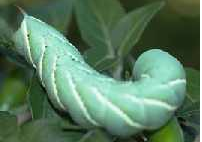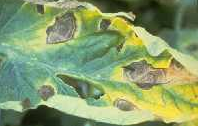Love growing tomato plants, but frustrated by how quickly they can suddenly turn bad and wilt, brown up or even die? Learn to recognize some of the common problems with tomatoes before they “go south”. Below is selected information from the Colorado State University Extension Office. For their complete list of Common Tomato Plant problems, Click Here.
Quick Facts:
- Tomatoes are an easy and popular vegetable to grow.
- Tomato problems may be caused by nutrient deficiencies, diseases, fungi or insects.
- Assess the symptoms, then make the appropriate treatment.
- Good cultural practices can reduce or eliminate many problems.
In general, for healthy tomatoes:
- Improve garden soil by adding organic material such as compost.
- Use disease-resistant varieties.
- Eliminate competition from weeds.
- Keep the plant growing vigorously with proper water and nutrients.
- Keep the garden clean of plant debris.
- Rotate crops.
- Space plants for maximum air circulation.
- Monitor for pests.
Failure to follow one or more of these steps can lead to pest problems. To manage pests, identify the source of the problem by assessing the symptoms.
Common Tomato Problems
 Photo Credit: http://www.ext.colostate.edu[/caption%5D
Photo Credit: http://www.ext.colostate.edu[/caption%5D
Phosphorus deficiencies occur early in the growing season when soil is still cool. Phosphorus is abundant in our soils but may be unavailable to the plant when the soil is too cold. Don’t plant tomatoes too early in the season. Use plastic mulch to warm the soil. Once soil temperatures rise, the problem usually corrects itself.
 Photo Credit: http://www.ext.colostate.edu[/caption%5D
Photo Credit: http://www.ext.colostate.edu[/caption%5D
Tomato or tobacco hornworms are large, green or gray-green caterpillars with white to tan v-shaped or dashed markings on their sides. A green to reddish horn protrudes from the hind end. They are voracious feeders, stripping leaves from stems and even eating unripe fruit. Pick them off by hand. The caterpillars are susceptible to Bacillus thuringiensis (Bt), as well as to many common vegetable insecticides.
 Photo Credit: http://www.ext.colostate.edu[/caption%5D
Photo Credit: http://www.ext.colostate.edu[/caption%5D
Early blight (Alternaria leaf spot) is caused by the fungus Alternaria solani. Symptoms become prevalent during the hotter months. This disease produces brown to black, target-like spots on older leaves. If severe, the fungus also attacks stems and fruit. Affected leaves may turn yellow, then drop, leaving the fruit exposed to sunburn. Sanitation is the best control. Remove all diseased plant tissue on the ground, as the fungus overwinters on leaf debris. Do not plant tomatoes in the same place next year. Space plants farther apart to improve air circulation. Avoid overhead irrigation. If the infestation is heavy, sulfur dust may help protect new leaves from infection.
For the complete list of Common Tomato Plant problems, Click Here.
